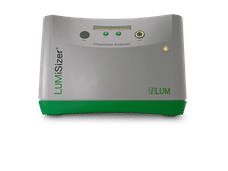New Study from Ceresana Research: Change in the Global HDPE Market
Whether used in shopping bags, packaging materials, or buckets, we see high density polyethylene (HDPE) every day. Less obvious, but nevertheless important products made from HDPE include water pipes, gas mains, oil tanks, and cable casings. A new study from Ceresana Research closely examines this important plastics market.
Global demand for HDPE is primarily influenced by rapidly growing sectors, such as the packaging and construction industries. Although North America and Western Europe accounted for approximately 44% of worldwide consumption during 2007, the Asian Pacific leads worldwide growth and, for the most part, will drive future HDPE revenue increases. Currently, Eastern Europe is also profiting from significant growth rates and has reached a market volume of 2.5 million tons.
Asia-Pacific's portion of worldwide consumption of HDPE has risen from 31% in 2000, to more than 35% in 2007. Manufacturers in this region are benefiting from Asia's rapidly growing markets and increasing export possibilities to North America and Western Europe. The HDPE manufacturing industry is migrating from previously established regions to the continuously growing and cost effective countries in Asia.
In the oil-rich countries of the Middle East, not only is demand for plastics increasing steadily, but so is production. Since the year 2000, HDPE production in the region has increased an average of 20% per year, whereby Saudi Arabia accounts for a large portion of this. There is no end in sight for this rapid development: Until 2013, projects with a total capacity of 6.7 million tons are planned throughout the Middle East, which is expected to make this region the most important supplier of HDPE.
Only marginal capacity increases will take place in Western Europe and North America, whereby expansions will primarily come through the modernization of old production facilities. Manufacturers of HDPE will be required to invest in innovative products and efficient production technologies, in order to stay current among increasing competition.
Milk bottles and other hallow articles made with blow molding processes are the most important application areas for HDPE. Above all, China, where bottles made from HDPE were first launched in 2005, is the fastest growing market for rigid HDPE packaging, due to an improving standard of living. In India and other heavily populated, emerging markets, infrastructure will continue to be built up - assuredly with pipes and cable conductors made from HDPE. This environmentally friendly material is profiting from discussions about the health and environmental damages that could be caused by PVC: Sealing sheets made from extruded HDPE have steadily continued to gain market share over the past decade. Today, 85% of sealing foil is manufactured from HDPE.
The Market Study Polyethylene - HDPE provides 900 pages of essential information on this rapidly growing market. It offers 100 company profiles of current and future manufacturers around the world. Development of 65 countries is detailed with individual country profiles. Additionally, this useful compilation informs readers of technical characteristics and application areas of HDPE and provides an overview of relevant laws and environmental regulations.
Topics
Organizations
Other news from the department business & finance
These products might interest you

LUMiSizer by LUM
The Versatile Particle and Dispersion Analyser: At-Line, in the Process and in the Laboratory
Comprehensive analysis of nano / microparticles & their interactions in dispersions with 1 instrument

Kautex Standardverpackungskatalog by Kautex Textron
KAUTEX Container Program – Plastic Bottles and Containers from 10 ml to 60 l
Successful Products for Laboratories and the Chemical, Pharmaceutical, Food & Cosmetic Industries

Get the chemical industry in your inbox
By submitting this form you agree that LUMITOS AG will send you the newsletter(s) selected above by email. Your data will not be passed on to third parties. Your data will be stored and processed in accordance with our data protection regulations. LUMITOS may contact you by email for the purpose of advertising or market and opinion surveys. You can revoke your consent at any time without giving reasons to LUMITOS AG, Ernst-Augustin-Str. 2, 12489 Berlin, Germany or by e-mail at revoke@lumitos.com with effect for the future. In addition, each email contains a link to unsubscribe from the corresponding newsletter.


























































